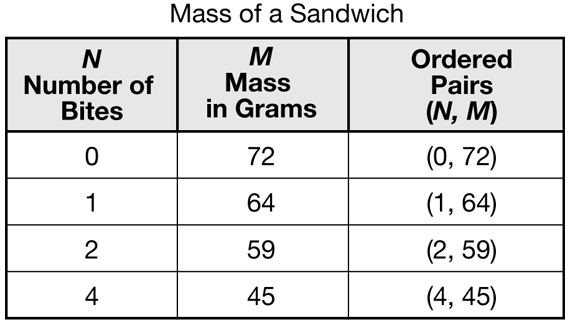Sandwich Mass
Est. Class Sessions: 2–3Developing the Lesson
Part 2. Conduct the Experiment
Collect the Data. Each student will have a sandwich to mass, so pairs will have to complete the data collection twice, once for each of their sandwiches. Students will use a copy of the Three-Column Data Table Master to create a data table like Shannon's in the Student Guide. See Figure 2. Let pairs complete the lab.
Graph the Data. After completing the data table, ask students to graph their results on Centimeter Graph Paper (Question 5). Make sure that students appropriately label and scale each axis. A sample graph of the data in Figure 2 is shown in Figure 3.
Question 6 draws attention to the data point where the number of bites is zero. This point lies on the vertical axis and the ordered pair will be (0, M) where M for this point is the mass of the whole sandwich. In our example, the mass (M) of the whole sandwich is 72 grams (0, 72).
















